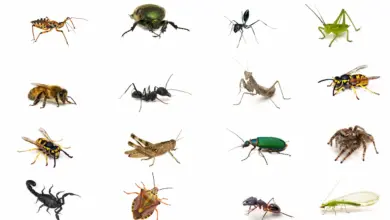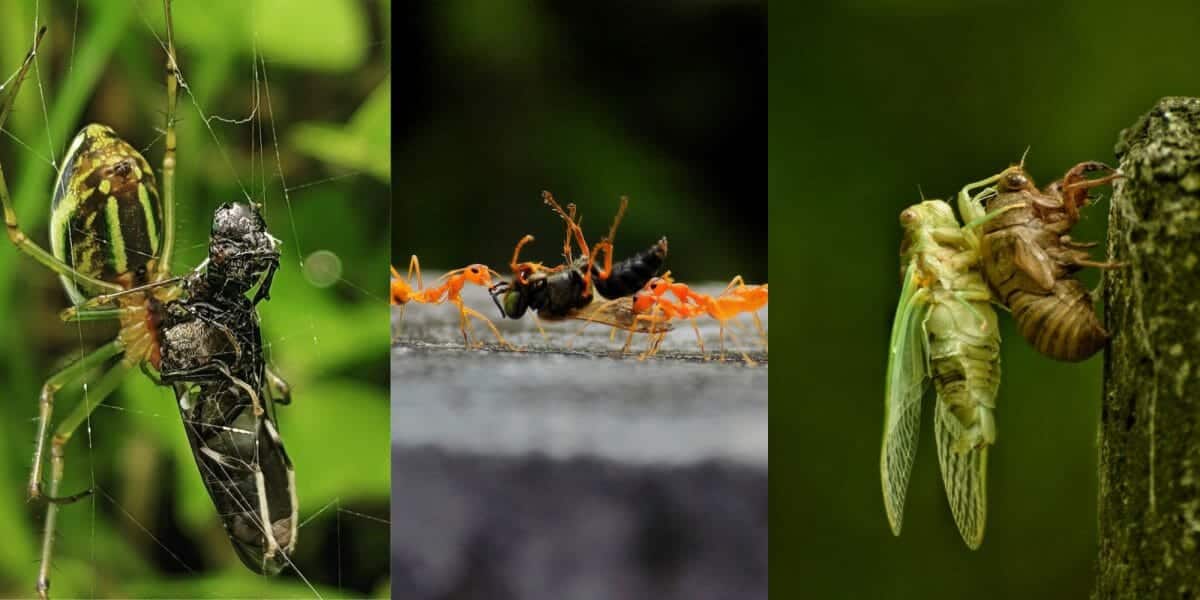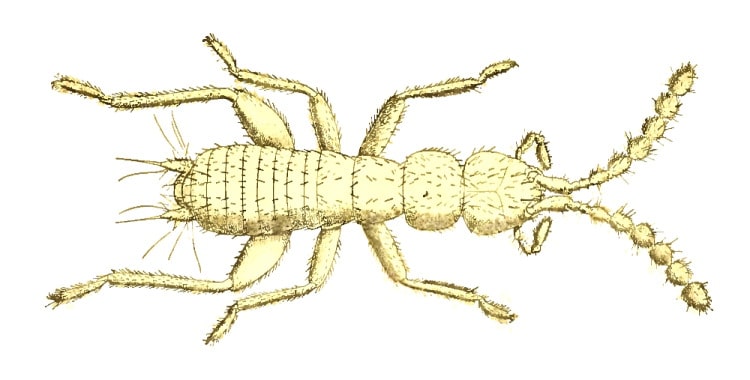Do Insects Have Tongues
Do Insects Have Tongues Or Taste Buds?
[social-share]
While insects do not have tongues the way humans do, they smell, taste, and digest food like we do, just via different sensory organs. By not having a tongue covered in taste buds, insects have evolved to have very different sensory organs that do the same job.
Let’s dig deeper if do insects have tongues in this article.
Do Insects Have A Tongue?
Unlike other animals, insects don’t have tongues covered in taste buds. Instead, they have plenty of sensory receptors that allow them to taste similarly.
When an insect ingests particular molecules, its chemoreceptors are activated within its nervous system, trapping chemical molecules.
Did you Know?
Insects can taste and smell thousands of chemicals in their surrounding environments via their nervous systems.
What Do Insects’ Mouths Look Like?
The ancestors of the insects we know and see today had a simple mouth opening with no mouth parts.
Over many millions of years, worm-like arthropods have evolved into insect species with various appendages in and around their mouth but not a tongue.
Insects are said to have differing mouthparts due to adaptive radiation. This is when two or more populations have evolved from a shared ancestor due to various environmental pressures and adaptations. So they share some anatomical characteristics but not many.
Not only do insects not have tongues, but their mouths also look very different from other animals. As well as not having a tongue, insects don’t have gums, teeth, or lips and instead have what scientists term ‘mouthparts‘.
Most mammals’ mouths look similar, but insects’ mouths vary greatly depending on what they eat. Some bugs have tubular or straw-like mouth parts to suck up liquids.
Unlike mammals, bees are insects with wings with a proboscis, which extends like a tongue into a sugar solution after being stimulated during a behavioral reflex detecting nectar on a flower.
This stimulation occurs when detected chemical molecules are transported to a dendrite, an outward projection from a neuron.
When a chemical is ingested, the neuron membrane of the bee’s nervous system is depolarized.
Subsequently, an electrical impulse travels through the nervous system, telling them that this chemical is safe to eat and delicious and that they should drink as much nectar as possible.
Other insects, like caterpillars, have a mandible-like jaw bone to aid the chewing of leaves, and this is where their taste bud receptors are.
Similarly, beetles have short pincer-like mandibles that pierce and suck liquids from their prey. Their mandibles are rounded with a groove along the inner surface that releases digestive juices.
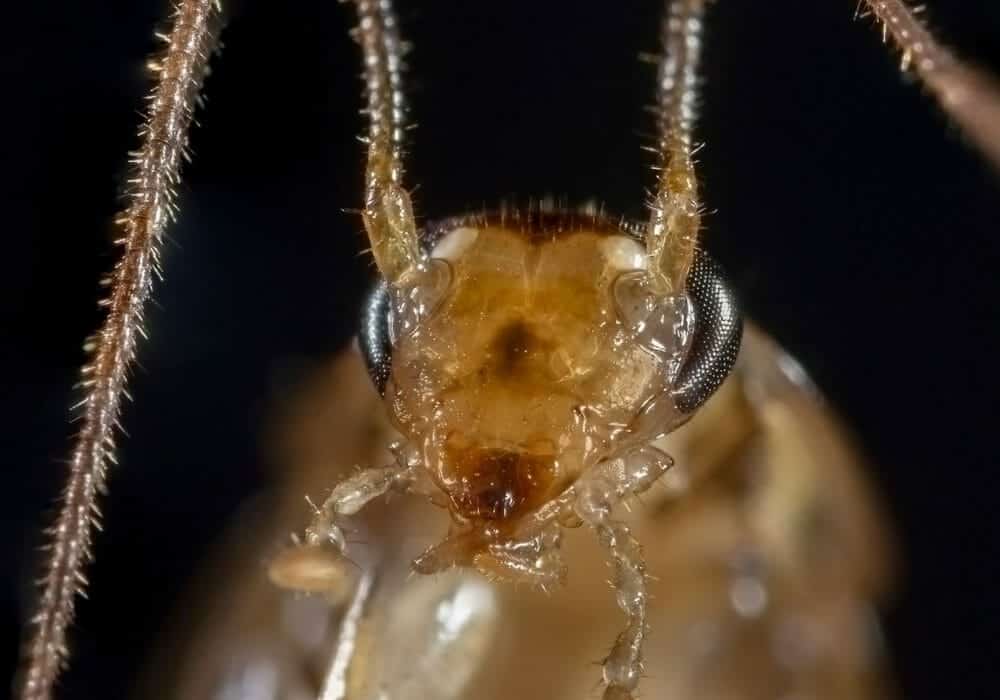
Do They Taste With Their Feet?
It’s easy to assume that all taste bud receptors would be within and around the mouthparts of an insect. But some have them in places you really wouldn’t expect.
Related article
- Insects with stingers with wings
- How Does An Insect Heart Work?
- What organs do insects have
- How far can insects see?
For example, moths and butterflies have taste buds on their legs and feet. This adaptation enables them to land on a plant and detect immediately if they can eat it, but how does it happen?
Insects’ bodies are covered in hairs that aid many functions, from keeping them warm to detecting different environments and tasting. Interestingly, some hairs allow the insect to smell pheromones and scents from plants.
Chemicals are said to enter a pit, otherwise known as pegs or uni-porous sensilla sensory organs, that allow insects to taste instead of having a mammalian tongue.
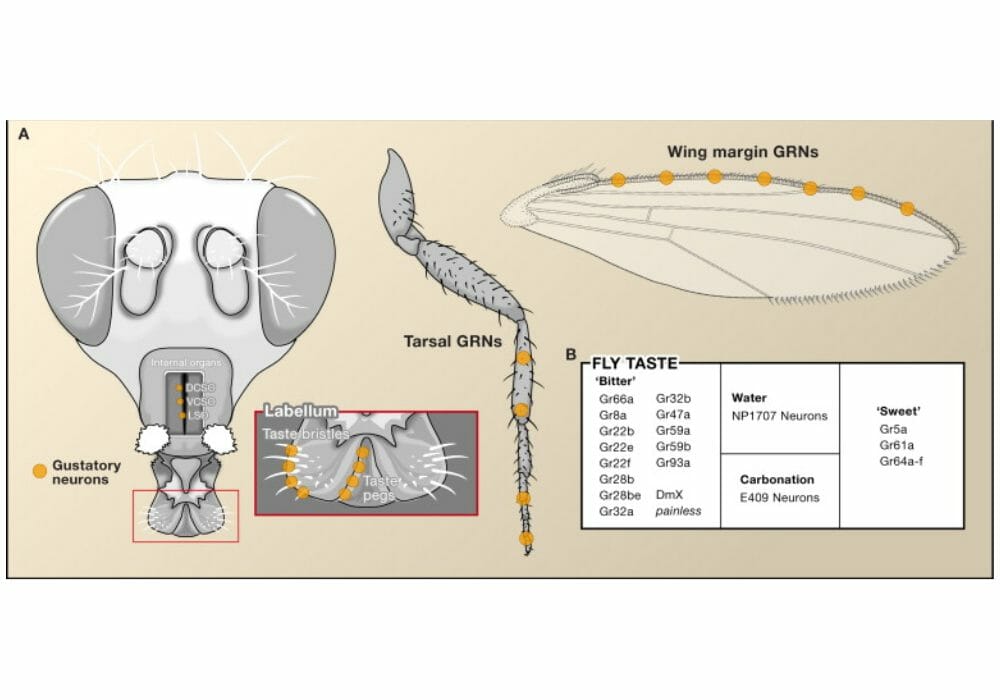
Why Do Insects Need To Taste?
Without being able to taste and smell chemicals on prey or other plants, insects wouldn’t be able to detect poisons around them or the sweet nectar that they thrive on.
Being able to taste also enables insects to detect whether a plant or environment is an excellent place to lay their eggs.
For example, butterflies taste plants, and flies taste particular decaying organic matter to decide whether they are good places to lay their eggs, reproduce and stabilize their species’ survival.
More specifically, being able to taste is crucial for insects dependent on different sweetness and bitterness concentrations. For example, fruit flies are particularly attracted to low salt concentrations on fruits, leaves, and plant secretions.
Honeybees are stated to be able to detect concentrations of sugar that humans cannot. Being the pollinators of our plants and curator of honey worldwide, it is subsequently essential that they can taste.
If they couldn’t taste, they wouldn’t pollinate plants effectively, the plants wouldn’t produce oxygen or provide us with the crops we eat, and the survival of many ecosystems globally and human populations would be threatened.
Conclusion
Although they don’t have muscular tongues covered in taste buds, insects have evolved to have complex and adapted anatomies enabling them to detect their food, taste, and eat it.
Covered in hairs containing sensory organs all over their bodies, insects can easily land on a plant and immediately detect whether it’s safe to ingest.
Disclaimer
Earthlife.net does not provide medical advice. We do our best to help users understand the science behind living beings; however, the content in the articles and on the website is not intended to substitute for consultation with a qualified expert. By interacting with the website and/or our email service, you agree to our disclaimer. Remember that you must consult a specialist before using any of the products or advice on the web.

